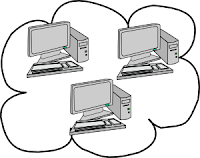The demonstration showed the possible uses of 3D virtual systems in the construction industry. Staff and PhD students at the University of Wolverhampton have been working for some time on the uses of Virtual Reality in the construction industry. This has led to a number of interesting projects that have proved useful to industry professionals. These have included a virtual West Bromwich town centre, that helped planners understand the impact of a new bus station, and a virtual reality application that helped get the opinions of residents on a proposed housing association development.
The expertise developed in the Architecture and Design department in the School of Technology, has also included procedural training. They have developed a safety training application that helps fork lift truck drivers develop awareness while engaged in their normal duties. The application requires the user to operate a forklift truck safely in a 3D stereoscopic virtual reality environment, which is very much like the real World. The only difference is that operator mistakes do not result in serious injury or costly damage to expensive stock items. The 3D environments use unique modelling software and are then programmed to mimic real life in such a way that users will have the same responses as they would in reality.
The project team are now looking to develop the use of virtual reality based learning for product familiarisation exercises which can help users and maintenance operatives become acquainted with products and equipment in the virtual world, before potentially misusing or damaging products in the real world.
The success of the training application is dependent on the skill of the team in modelling the real world environment, and objects in it, and then programming real world properties into those objects so that they act as they should.
This type of learning has many cost saving benefits in both time and money. Under the umbrella of 'serious games' the uses of virtual reality for training purposes is an established method of training.






